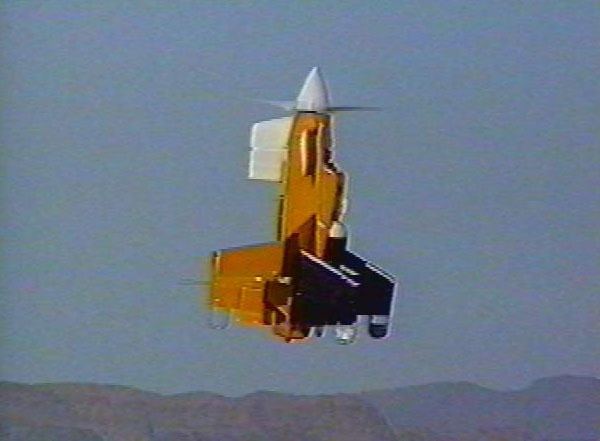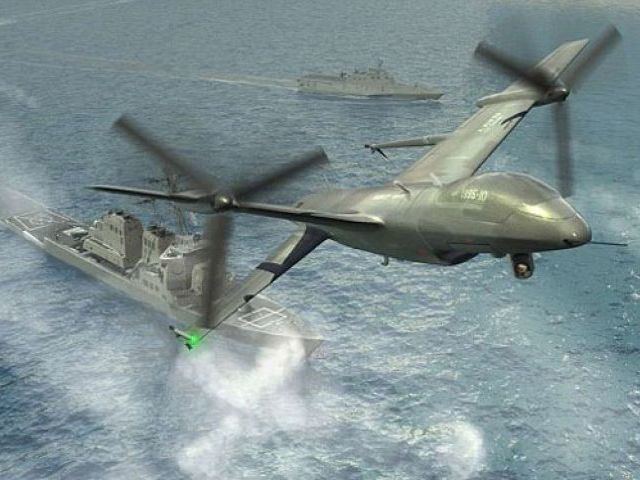 | ||
Quad rotor tail sitter autonomous flight
A tail-sitter or tailsitter is a type of VTOL aircraft that takes off and lands on its tail, then tilts horizontally for forward flight.
Contents

Quadrotor tail sitter vtol manual flight
History
The concept of a tail-sitting aircraft was included in a patent by Nikola Tesla in 1928.

The Focke-Wulf Triebflügel (wing-driven) fighter was a German tail-sitter project during the Second World War. Three wings were mounted radially as a rotor on a rotating section of the fuselage and driven by small jet engines on the wingtips. The aircraft was to be propelled by this wing rotation. For takeoff and landing it would fly vertically as a helicopter, then tilt over horizontally to fly as a self-propelled wing generating both lift and thrust. The contemporary Heinkel Lerche project had an annular wing forming a duct around a conventional propeller, and in the transition from vertical to forward flight the lift would have transferred to the wing.

The SNECMA Coléoptère was a postwar French development of the annular wing concept, but powered by a turbojet. It flew in both vertical and horizontal flight modes but never achieved the transition between the two.

Meanwhile the USA was experimenting with propeller-driven design configurations with relatively conventional fixed wings. The Convair XFY Pogo had a delta wing with cruciform tail and successfully demonstrated the full transition between flight modes, while the Lockheed XFV Salmon had a straight wing with X tail but never achieved the flight transition.

A later jet-powered design, the Ryan X-13 Vertijet, first flew in 1955. Two prototypes were made, both flew, made successful transitions to and from horizontal flight, and landed. The final test flight was near Washington DC in 1957.

An inherent problem with all these tail-sitter designs was poor pilot visibility, especially of the ground, during vertical descent and landing. This led to the concept being abandoned once a more practical form of VTOL appeared, in the form of thrust vectoring.
An unmanned UAV does not suffer the problem of pilot attitude. The Dornier Aerodyne is of ducted-fan configuration similar to a coleopter, and a test UAV flew successfully in hover mode in 1972, before development was discontinued.
Studies and wind tunnel models were made of a tail-sitting version of the F-16 that would be ship based, but any further development was abandoned due to the large thrust requirement, and the need for extensive apparatus to handle take-off and landing.
